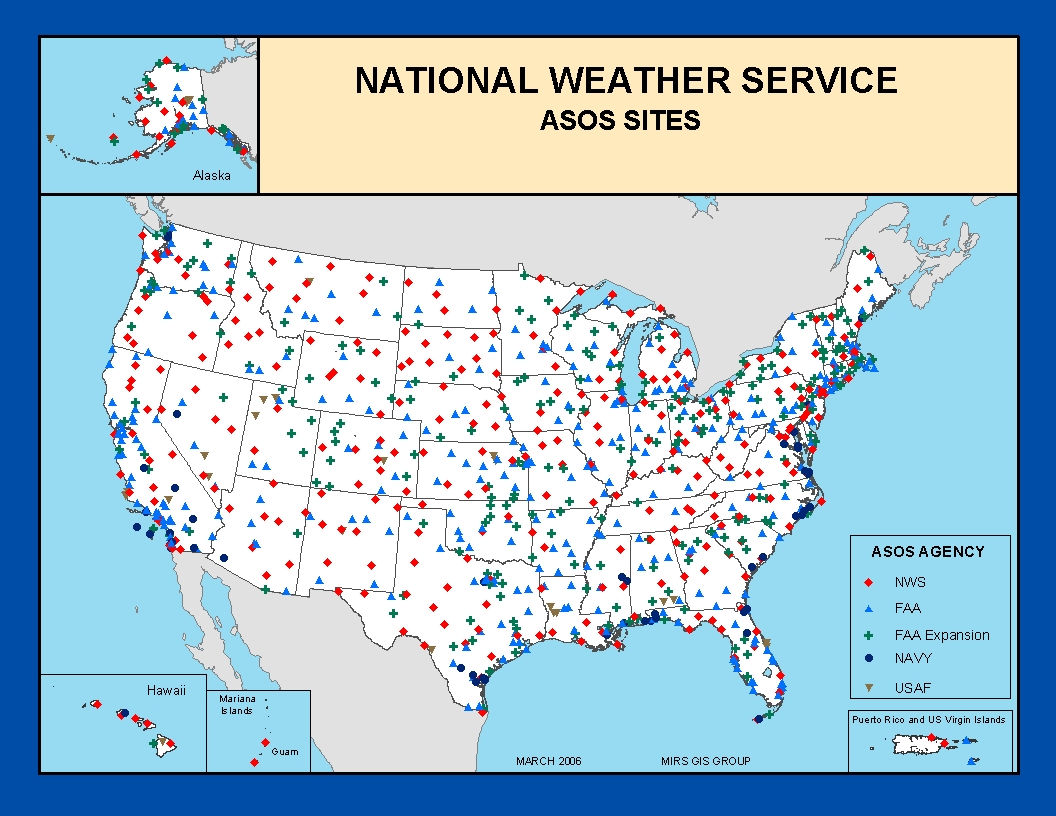When you hear the high temperature of the day from your local TV weathercaster, that information probably came from an Automated Surface Observing Systems (ASOS) machine at your local airport. The ASOS program is a federally-funded, joint effort of the National Weather Service (NWS), the Federal Aviation Administration (FAA), and the Department of Defense (DOD). The systems serve as the United States' primary surface weather observing network, and their observations become useful when tropical cyclones are close to shore, have made landfall, and/or have moved inland.
An ASOS station is a land-based array of instruments and electronic sensors used to automatically process and create surface observations and measurement of the atmosphere in near real time. The systems provide 1-minute, 5- minute, hourly, and special observations 24 hours a day. A set of data is collected over time to provide a "representative" observation, and the system then applies mathematical logic, called algorithms, to the collected data to extrapolate the weather over a wider area. ASOS-monitored weather conditions include:
At present, automated weather stations are unable to report a variety of meteorological conditions. ASOS equipment is limited in that it can only detect weather that is directly over head, and hence, weather that has not encountered the sensors will not be measured. Some meteorological conditions ASOS equipment can not measure include:
Research is on-going to allow the automated stations to detect many of these weather conditions. All of these conditions are of interest to the meteorological community (and many of these can pose dangers to aircraft), and thus, most of the busier airports have part-time or full-time human observers which provide additional information to the automated weather stations' observations. ASOS equipment can also suffer mechanical breakdown, requiring repair or replacement. During system outages, human observers are also often required to supplement missing or non-representative observations. Researchers are working to produce more robust systems which are less vulnerable to natural damage, mechanical wear and icing. With the largest and most advances weather sensors, ASOS machines have significantly expanded the information available to weather forecasters (especially with regards to observations at night). The ASOS program has also more than doubled the number of full-time surface weather observing locations. Getting more information on the atmosphere, more frequently, and from more locations is key to helping the NWS increase the accuracy of its forecasts and warnings.
|



